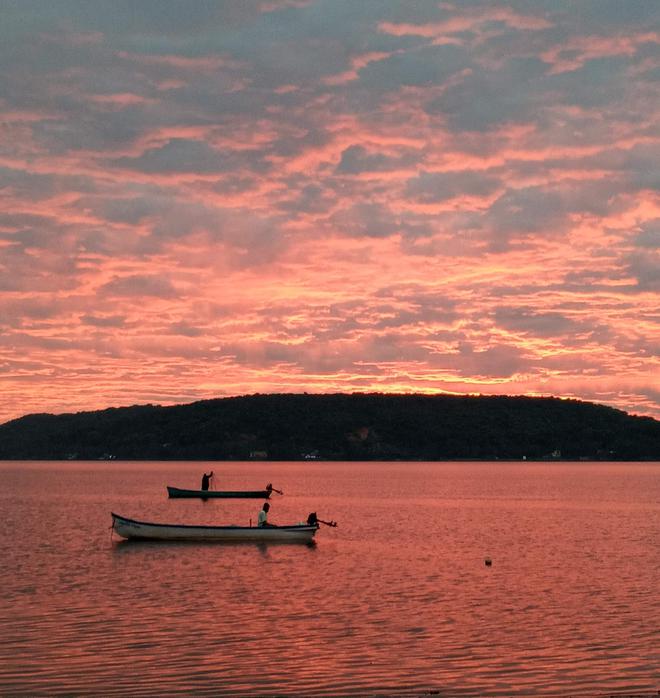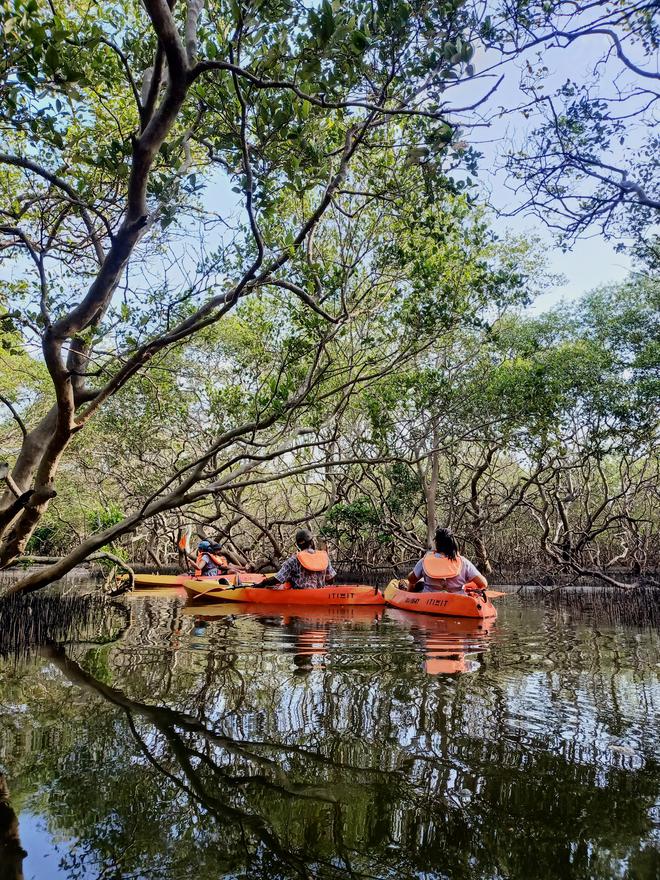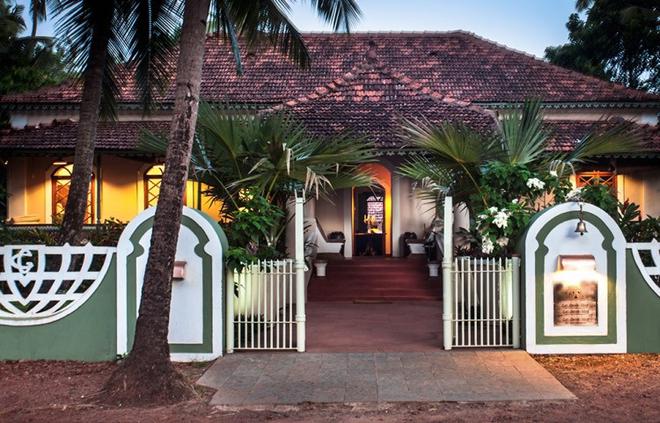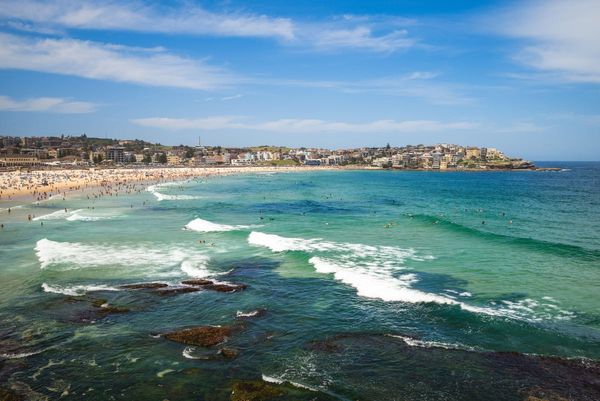The deep forest in Assonora is off limits. But steep, winding roads punctuated by tea shops lead to a plateau, just a short walk or climb away. Here, if you are lucky, you will see peacocks strut past, as brown-headed barbels startle you with abrupt calls. Here, dirt roads lead you to an impressive view of the village, replete with grazing lands and forests.
Two kilometers away, stands Club Mahindra’s largest property yet: tucked into this quiet village in North Goa. The 33-acre property is the newest to offer experiences that a typical Goa-bound tourist may not be familiar with. Devoid of sea spray, suntan and rave parties, the green, quiet side of Goa is the star here.
The State is seeing a image makeover, influenced by domestic tourists and long stay travellers who flocked here through the pandemic. Shunning the neon party scene and hustling beach shacks of Anjuna, Calangute and Baga, they now come looking for hiking trails, quiet villages and local food.
Vijay Gawade, a naturalist who leads hiking trails for Club Mahindra Assonora confirms that it is one of the most preferred outdoor activities of their guests, especially families. And, more so, since the pandemic began. As he leads us on a hike through Assonora’s inroads , we spot a Brahmani kite, swallows, cuckoos, magpies and a red-whiskered bulbul. We involve the local community to find more trails nearby,” says the avid trekker who is from North Goa himself adding, “When it rains, it is even more beautiful.”
Date with a dolphin
“We always felt that the Northern part of Goa was virgin in nature,” says Pratik Mazumder, chief marketing officer, Club Mahindra explaining how their objective was to stay clear of the commercial side of Goa, where they have three other properties. He adds. “Among tourists that keep visiting Goa, most have done the commercial part of Goa at least once — particularly people who are in the 35-plus age profile, with families and kids.” The property often hosts three generations of families, as this quieter side of Goa tends to be more inclusive for small children and elderly grandparents.
These visitors now want places where they can spend time with families, and with Nature. Since the pandemic began, Pratik says they have seen a huge uptick in experiential services: a keen interest in wanting to go for Nature walks, bird watching experiences. “Home-style and local food have also created a great interest in the mind of our guests,” says Amit Kumar, general manager, ITC Grand Goa. Located amid swaying coconut trees and gleaming lagoons in Cansaulim, South Goa, the luxury resort is now looking to cater to the changing demands of the post-pandemic traveller with curated village trails and Goan culinary masterclasses. “More groups are looking for meaningful experiences even in a leisure destination like Goa,” adds Amit.

Puja Mitra, co-founder of Terra Conscious, a social enterprise that curates Nature-based travel experiences with a specific focus on marine and coastal conservation, agrees that there “there is a shift in terms of more travellers seeking offbeat experiences and supporting Nature-based travel enterprises,” adding that, “there is a concern among locals that mass tourism activities with its related infrastructure development is impacting the fragile coastline and biodiversity.”
She thinks that the shift could be attributed to many factors. If we are looking at it from a pandemic lens, “Maybe because a lot of people moved here from other cities for longer duration — staycations/workcations etc — during the peak of the pandemic. We have had more people here in the off-season than non-pandemic years. So that allowed those offering experiences in the off-season to see increased traction as well.”

Apart from their conservation work, Terra Conscious offers two experiences (November - May) called the Ocean Biodiversity Experience and Mangrove & Estuary Experience, which are boat trips designed to raise awareness about Goa’s coastal ecosystem and marine wildlife.
“We have a kayaking trail to raise awareness about the importance of mangroves, which we conduct in the Nerul river, Candolim,” adds Puja. They also lead cycling and Nature walks to learn about Goa’s plateau ecosystems in partnership with academic researchers. The team is working with the Goa Forest Department to create guidelines for responsible wildlife-based tourism and conduct capacity building programs for boat operators and guides.
“Being a part of the Western Ghats, a global biodiversity hotspot, we are fortunate to have marine mammals, crocodiles, sea turtle nesting, coral reefs, otters, diverse bird species, insects, leopards, bisons and even tigers that have been reported from Mhadei. Hence, trails that introduce visitors to these habitats and species are popular and also becoming increasingly knowledge-driven,” says Puja.

In the late ‘80s and ‘90s, Goa was the prime birding destination for foreigners, especially Europeans, says Parag Ragnekar, a wildlife conservationist who also heads Mrugaya Xpeditions. “They would come for a two-week holiday for this. But other aspects like culture was not of interest. Now, people are exploring culture and heritage. Recently, I took a group on a Nature trail and they wanted to see how the local bread was made. They may not be hard core wildlife-enthusiasts but they still wish to get bits and pieces of everything.”
Apart from the wildlife sanctuaries, coastal mudflaps in Agassaim, Zuari and inland water bodies in Curtorim village and Carambolim are hotspots for birding. In the monsoons, plateaus are a sight to behold, says Parag. “Plateaus as an ecosystem habitat is misunderstood. Though they are considered barren, they hold a lot of life.”
In the North, people who are looking for a more quiet and quality-driven experience, are choosing to stay away from the main beach areas and move further North towards Mandrem and Morjim. And in the South, perhaps to areas like Patnem and Galjibaga. The movement towards the South is being propelled, at least partly, by social media. Puja says, “You just have to see the development on beaches such as Palolem, Benaulim and Agonda that caters to visitors, to know that it’s not based on very recent trends but a steadily increasing interest in all parts of Goa, including the hinterland.”







